Last Updated on March 5, 2024 by Marian Jones
The world’s grandest art gallery, the Louvre’s enormity presents both a pleasure and a challenge. It is said that it would take a hundred days to see everything, if you stopped at each exhibit for 30 seconds. So, this is a whistle-stop and rather esoteric tour, stopping off at some pointers to French history and at some representative examples of the best of French painting, with also a very quick nod to a blockbuster from Italy and a treasured ancient Greek statue.
a little history

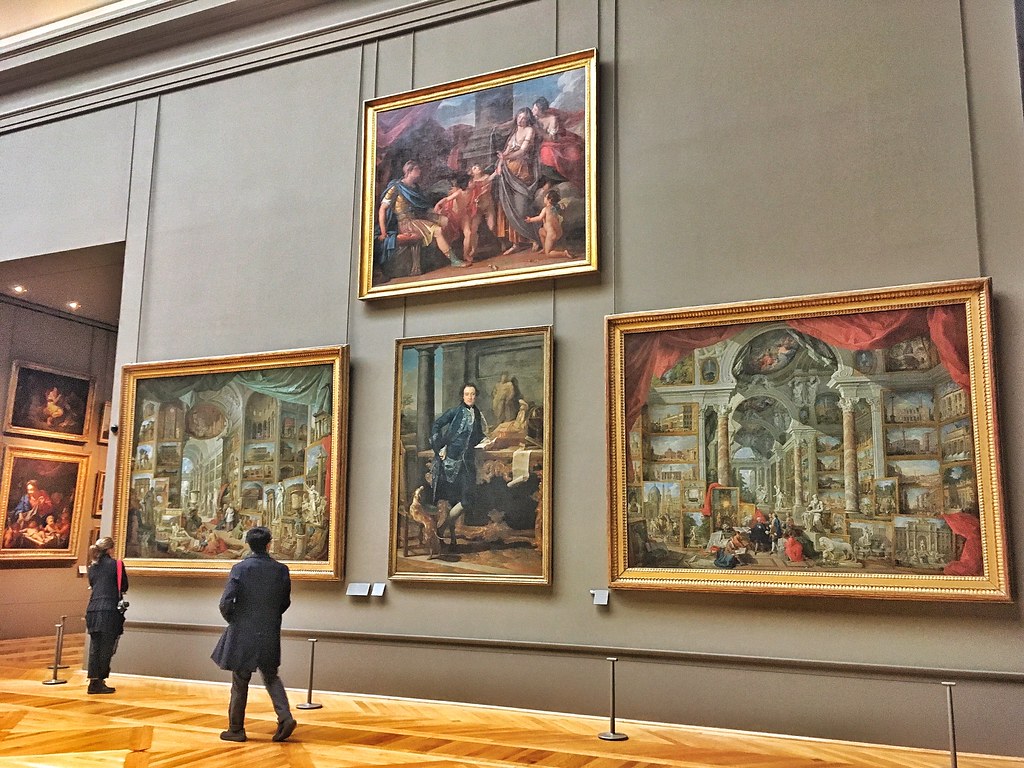
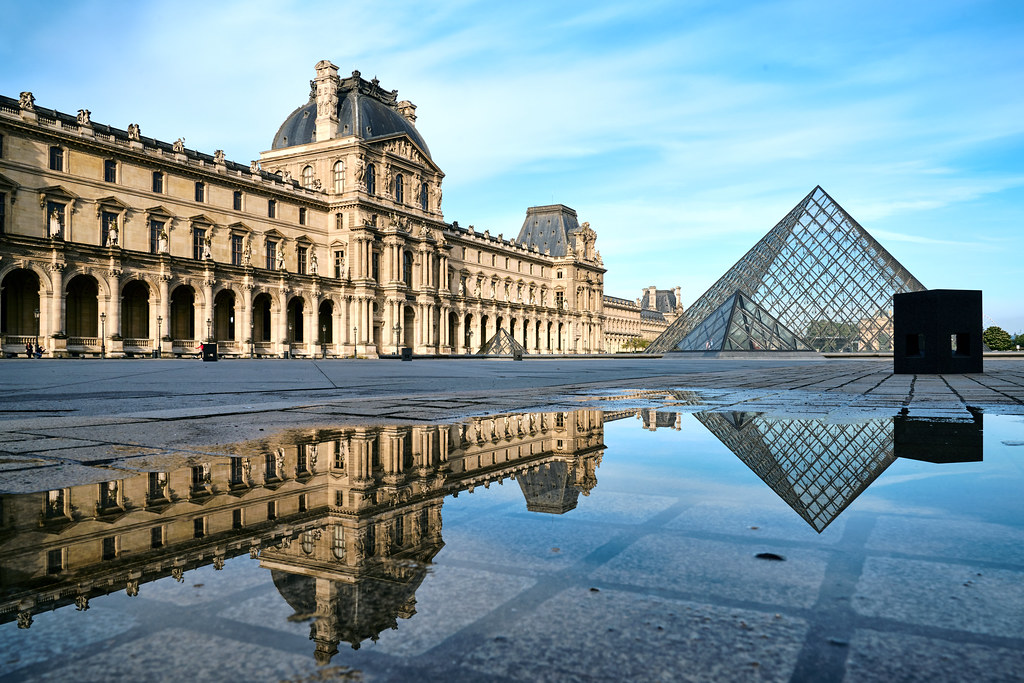
The Louvre was originally built as a royal palace, begun in about 1200 and extended in the 14th century. François I, who reigned from 1515 to 1547, began storing his personal art collection there and he summoned Leonardo da Vinci and other artists to work there, something which Louis XIV also encouraged in the 17th century. So, it was quite natural that in 1725 art salons were held at the Louvre and then, in the 1740s, they were opened to the public. After the execution of Louis XVI in 1793, much more art from the royal collections was transferred here and Napoleon, whose troops looted art from the countries they conquered, further extended it by building a whole new wing.
In the 1980s a major refurbishment took place. The Finance Department was moved out of one wing, creating much more space for art and an eye-catching new entrance was installed, the pyramid, designed by the Chinese-American architect I M Pei. Some loved it, finding the 637 glass panels the perfect way to reflect the beauty of the surrounding ancient buildings, others found it too much of a ‘Disneyfication’. But the 2 million people – two thirds of them foreigners – who visit the Louvre every year prove its enduring popularity. Cézanne summed up its appeal for all art-lovers, saying that ‘the Louvre is the book from which we learn to read’
2 big hitters
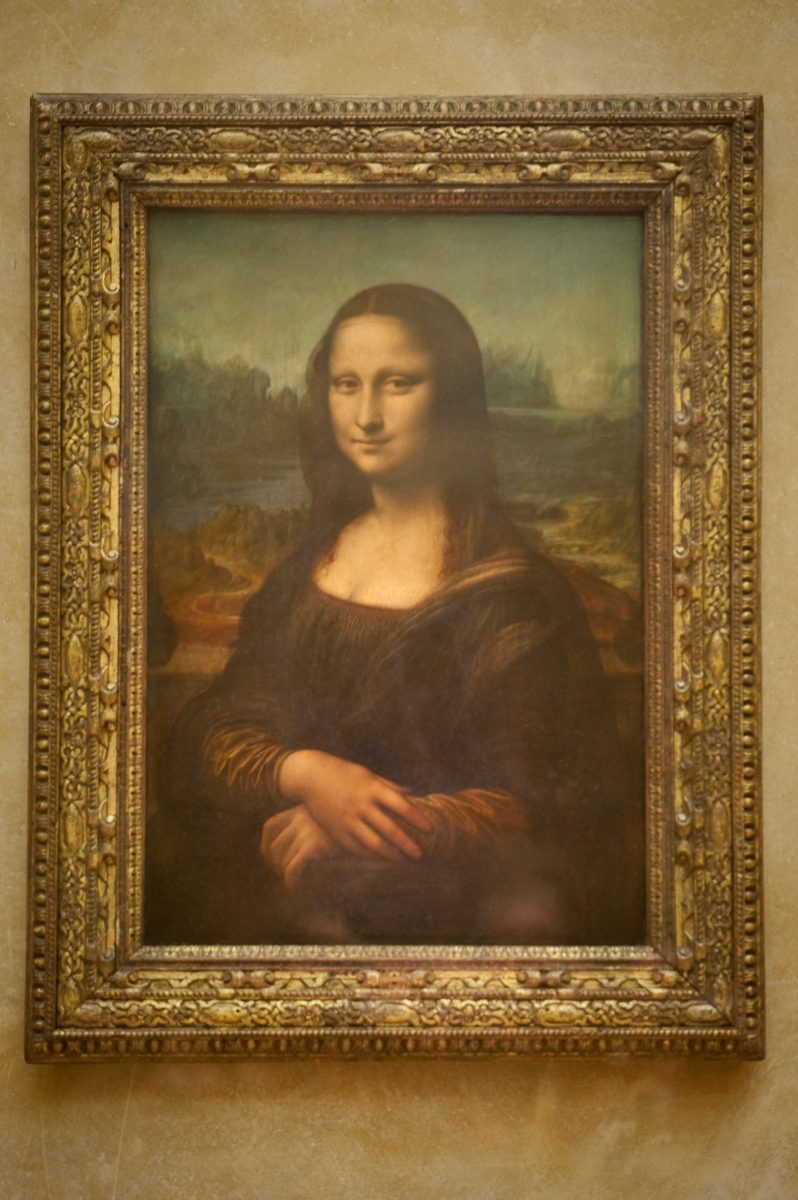
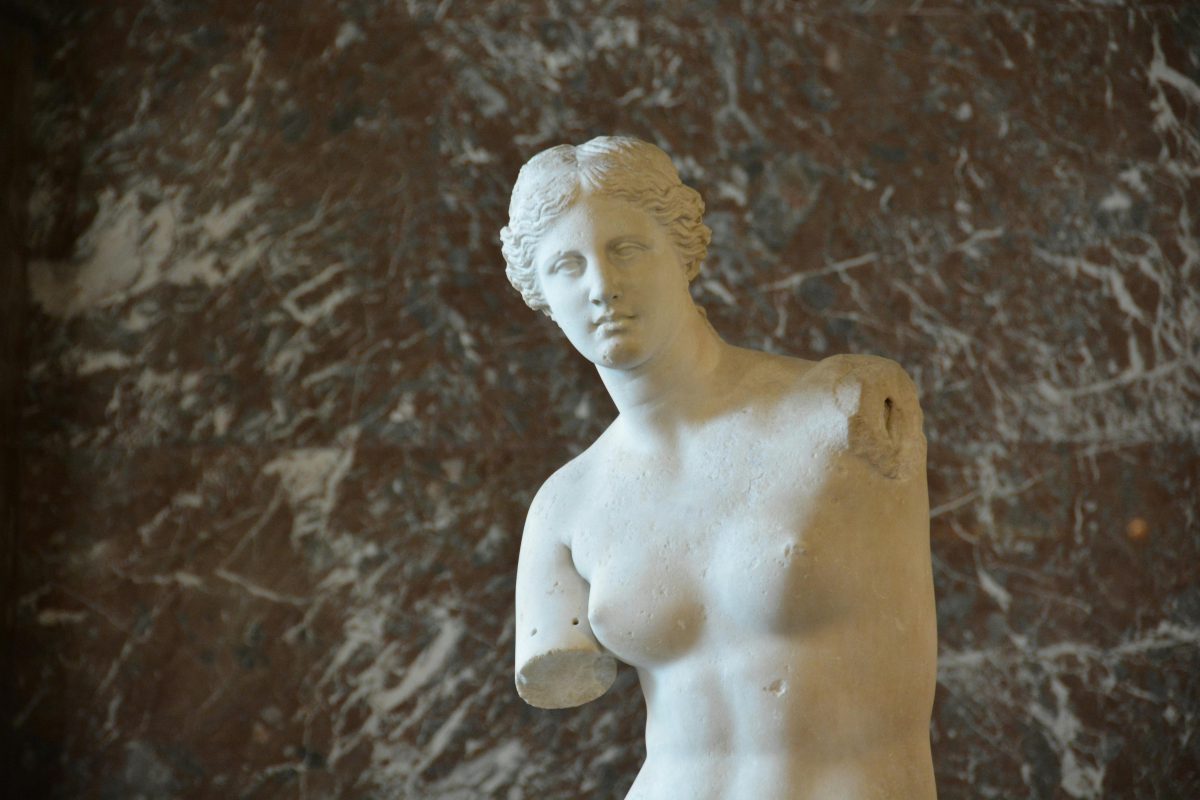
The Louvre has 8 miles of corridor and 300 rooms. Its 8 departments – painting, sculpture, antiquities, decorative arts, for example – are spread over 3 wings, each with 4 floors. So, you really do need to select in advance what you want to see and use the Louvre map to help you find it. Some people are said to go in, find the Mona Lisa, take a photo, then leave. A less reductive, but still manageable, strategy for a first visit is to pick a few highlights and walk between them, enjoying whatever you pass en route. Walking from the Mona Lisa to the Venus de Milo, for instance, will take you through the wonderful collection of Italian renaissance paintings.
The Mona Lisa, barely bigger than a piece of A2 paper, is unquestionably the top attraction. But why? It’s partly the mystery – who was she? Perhaps the wife of Francesco Giocondo, but it’s not certain. And what’s causing that enigmatic smile? Leonardo da Vinci, so well-known, produced relatively few paintings, making this one more valuable. His technique, ‘sfumato’, where layers of paint are washed on top of each other, created interest as it was revolutionary for the early 1500s. And finally, the fact that she was stolen in 1911 and was much talked about until she was found 2 years later, also added interest. So now she sits behind her bullet-proof shield as people file past her all day long.
The Venus di Milo, a Greek sculpture thought to be by Alexandros of Antioch and to date from about 100 BC, is another huge attraction. She is seen as the ideal classical representation of female beauty, despite the fact that both her arms have been broken off, possibly during a tussle as French sailors tried to carry her away. She has also lost the jewellery which originally adorned her – a bracelet, earrings and a headband – and the colourful paint with which she would have been decorated. But she stands on a pedestal at the end of a little corridor, serene and beautiful.
finding french history at the louvre

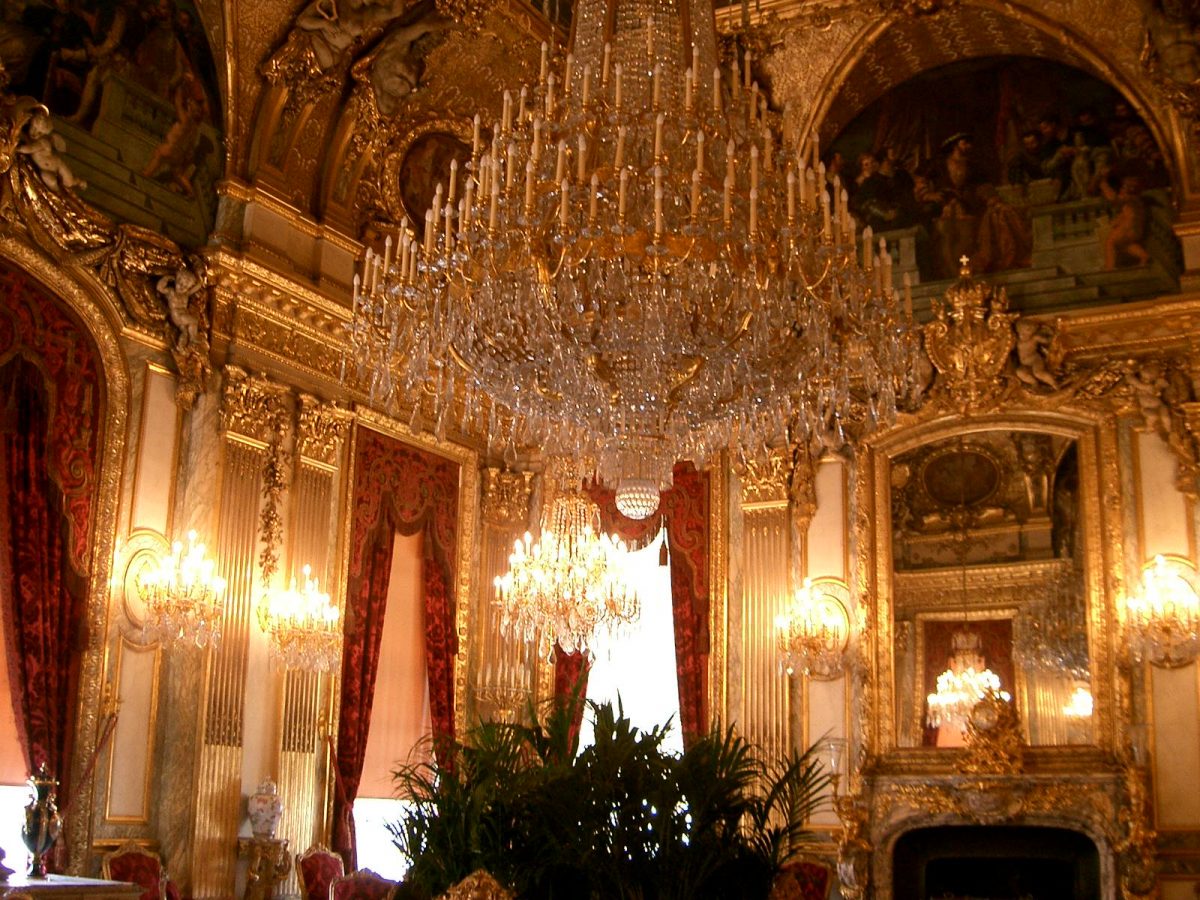
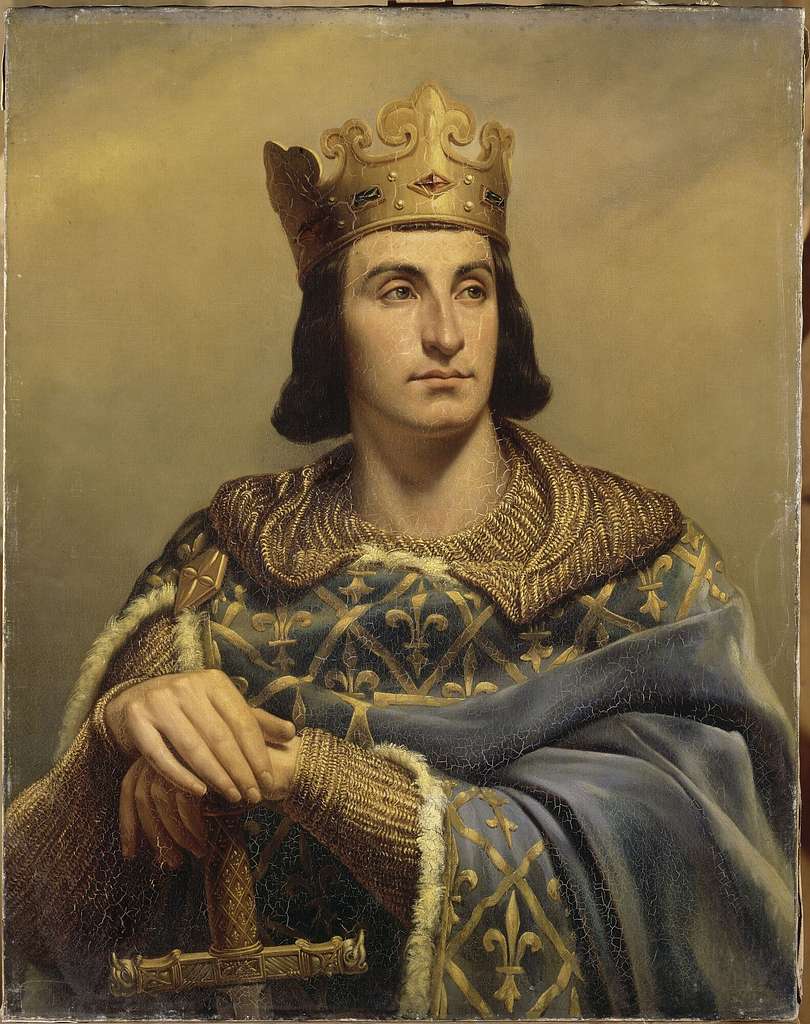
In the basement of the Sully Wing, you can see medieval remains including some of the wall Philippe Auguste built to protect Paris. Rooms designed for Henri II are some of the oldest in the palace, resplendent with newly restored renaissance woodwork. In the Apollo Gallery you can see the lavish ceiling paintings done by Delacroix – and 20 other artists! – in homage to Louis XIV. The central panel shows Apollo (Louis in disguise!) slaying the Serpent Python. The French crown jewels are there too, individually designed for each king and often featuring bejewelled fleur-de-lys, the symbol of French monarchy since the 12th century. Louis XV’s crown is a particularly splendid example.
Visit the Apartments of Napoleon III up in the Richelieu Wing to see a lavish example of what is meant by ‘2nd Empire style’. The Emperor used these rooms for official business in the 1850s and 60s and they show the lavish taste for which he was famed. In the Grand Salon and the opulent Dining Room, no expense was spared. Think sparkling chandeliers, gilded mouldings, silk curtains, velvet furnishings and ornate ceiling paintings. The empire fell in 1871, Napoleon and the Empress Eugénie fled to England and he died just 2 years later.
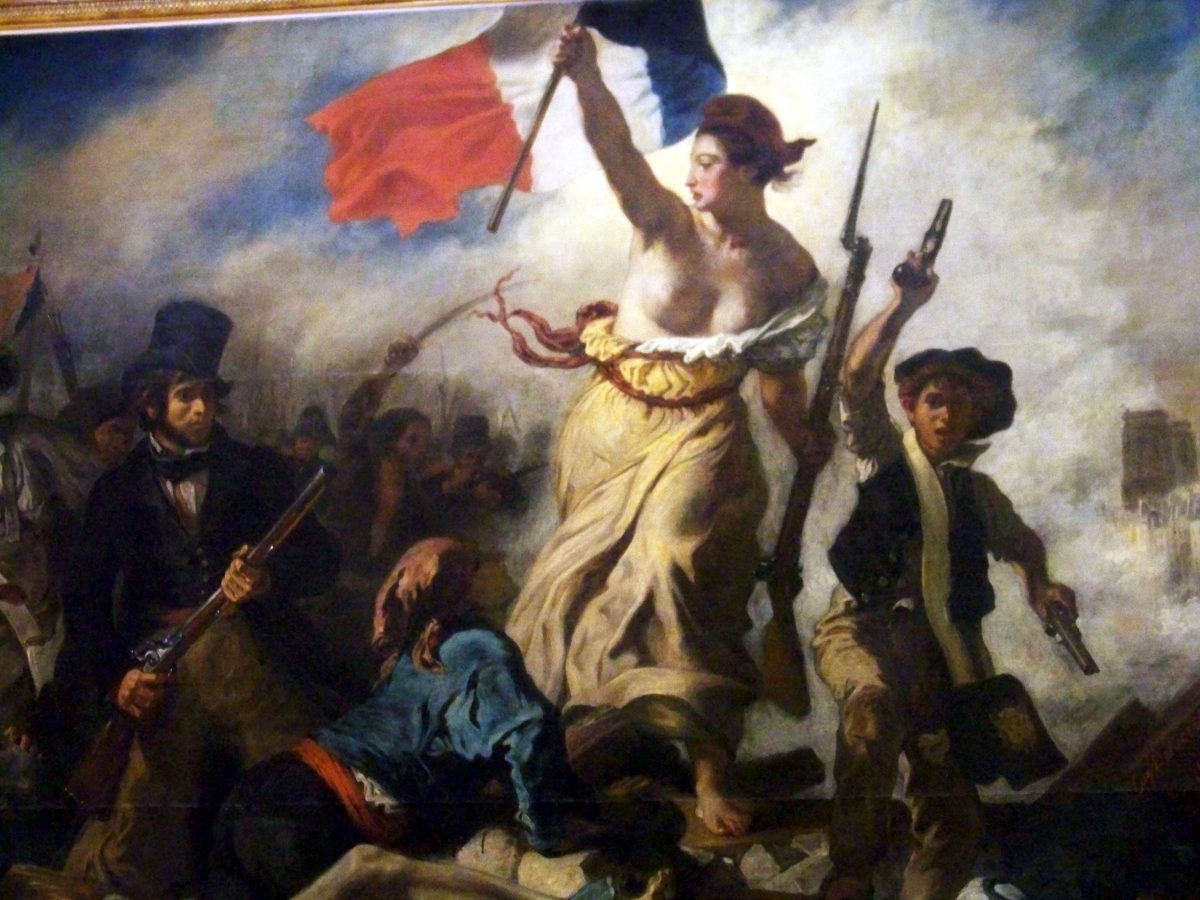
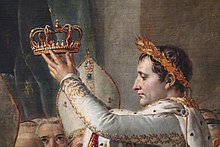

Paintings of significant moments in French History include The St Bartholomew’s Day Massacre by Joseph-Nicolas Robert-Fleury, painted in the 19th century, recalling the dreadful day in 1572 when thousands of French Huguenots were slaughtered by Catholics objecting to the marriage of the king’s daughter to a Protestant. Hyacinthe Rigaud’s portrait of Louis XIV, painted in1701, shows a powerful image of the king in richly embroidered coronation robes. The massive ‘Coronation of Napoleon’, was commissioned by Napoleon himself. He asked Jacques Louis David to capture the scene in Notre Dame, his proudest moment, presided over by the pope, and to include his mother, who had in fact refused to attend the ceremony.
Perhaps even better known is ‘Liberty Guiding the People, Delacroix’s portrayal of the triumph of Republicans over the monarchy in the July Revolution of 1830. King Louis Philippe, who came to the throne that year when Charles X was forced to abdicate, regarded it as so dangerous that he had it hidden away. It shows Marianne, the symbol of France, strong and bare-breasted, with a tricolore in one hand and a gun in the other, leading the way to victory over a pile of dead and broken bodies. Stirring stuff, a pictorial emblem of Republican France.
3 more french painters
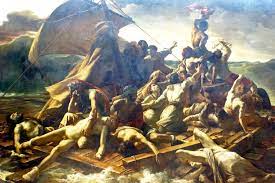
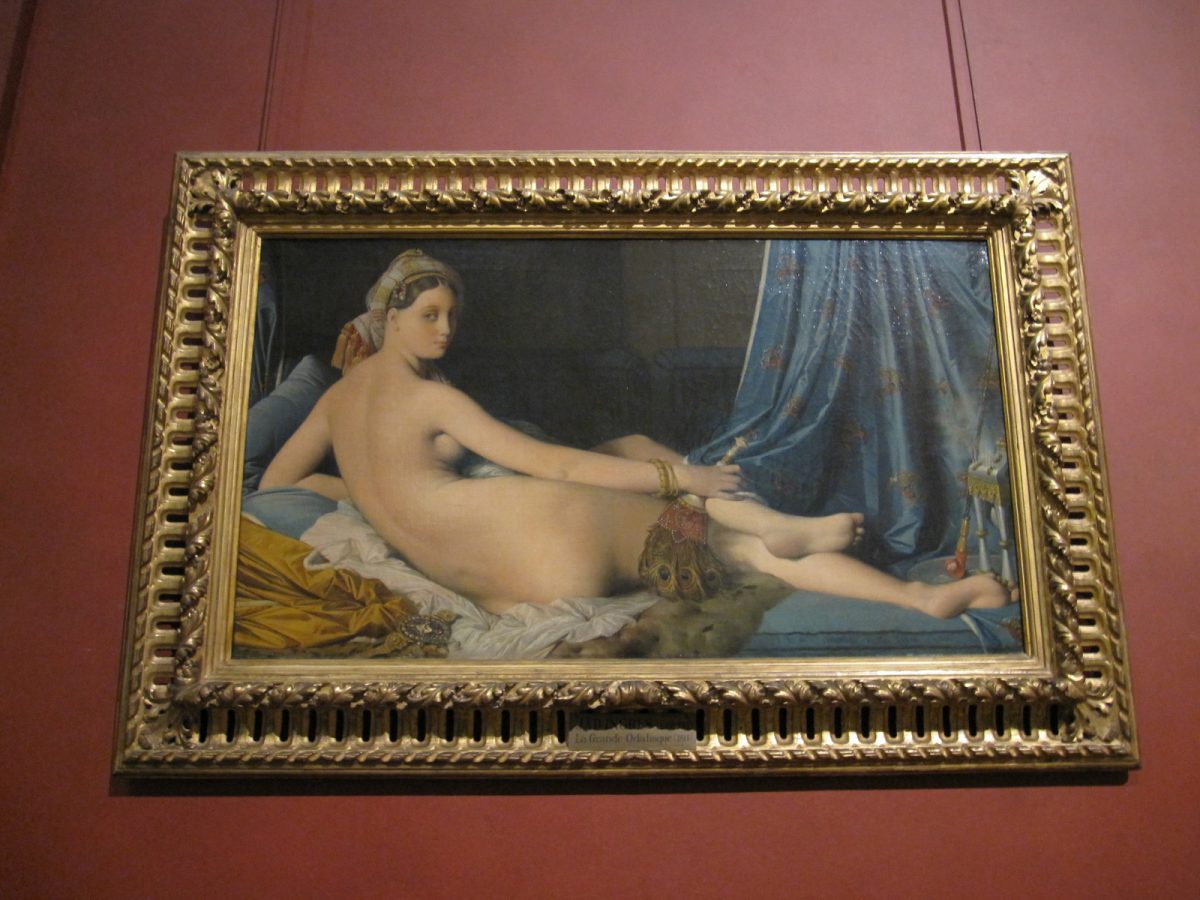
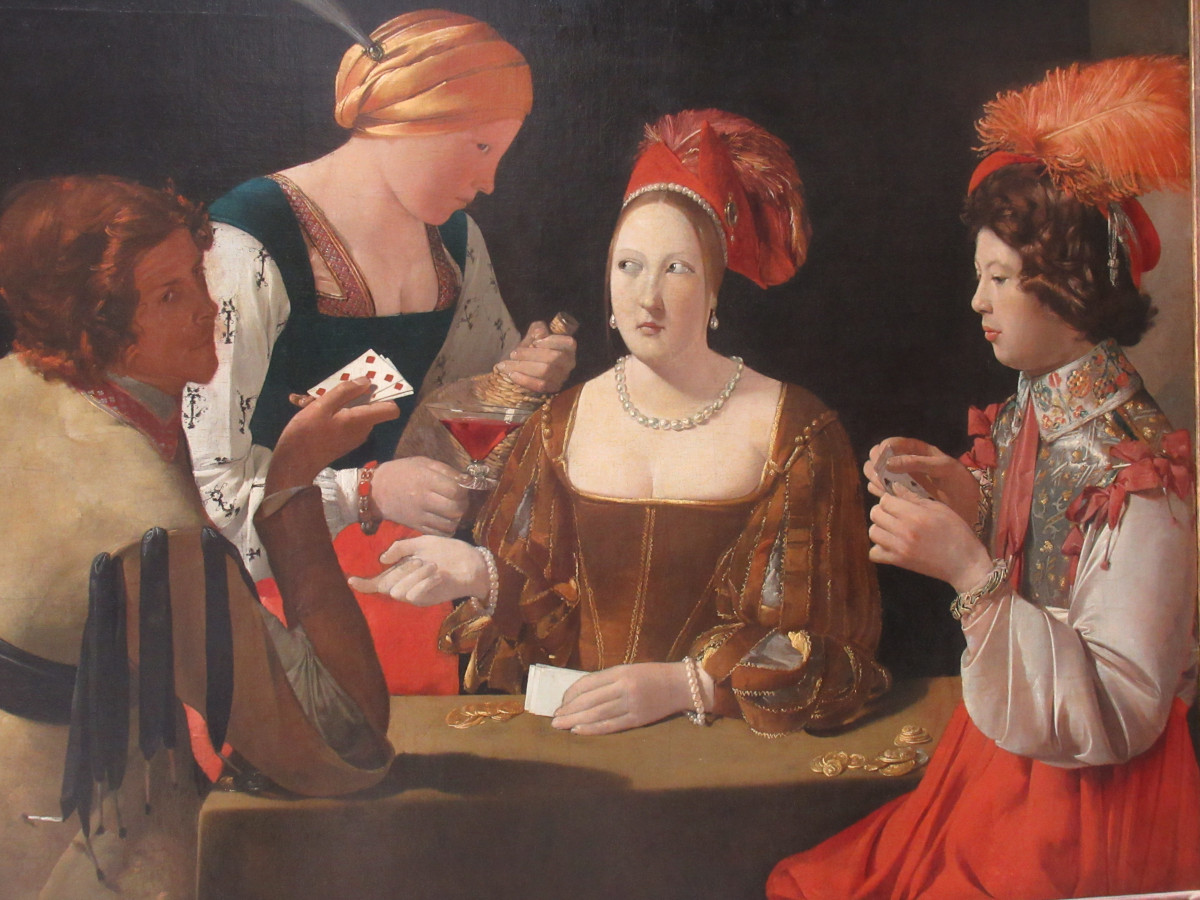
The Cheat with the Ace of Diamonds was painted by Georges de la Tour in 1635. It’s an intriguing painting, capturing a moment when one of the card players featured is about to cheat by pulling a hidden ace of diamonds from his belt. It was considered a comment on 3 moral temptations, lust, alcohol and gambling.
The Grand Odalisque by Jean Auguste Dominique Ingres, dating from 1814, was an influential painting which showed a nude female figure as never before: looking brazenly out from the scene at the viewer. An odalisque was a young woman living in a sultan’s harem, chosen because the artist would not have dared to paint a western woman in such a bold way in the early 19th century.
Théodore Géricault’s The Raft of the Medusa, painted in 1818, portrays a terrifying scene which did actually happen. When a French frigate was wrecked off the coast of Mauritius, some 400 sailors on board ended up adrift on a raft with very little food and water. Only 150 were still alive when help came and speculation that they had survived through murder and cannibalism was rife. This painting, with its dramatic and emotional theme, seemed a turning point and ushered in the era of Romanticism.
Listen to the POdcast
Reading suggestions
All the Louvre
A Guide to the Louvre
links for this post
The Louvre
Previous Episode Saint-Germain
Next Episode Modern Art in Paris





